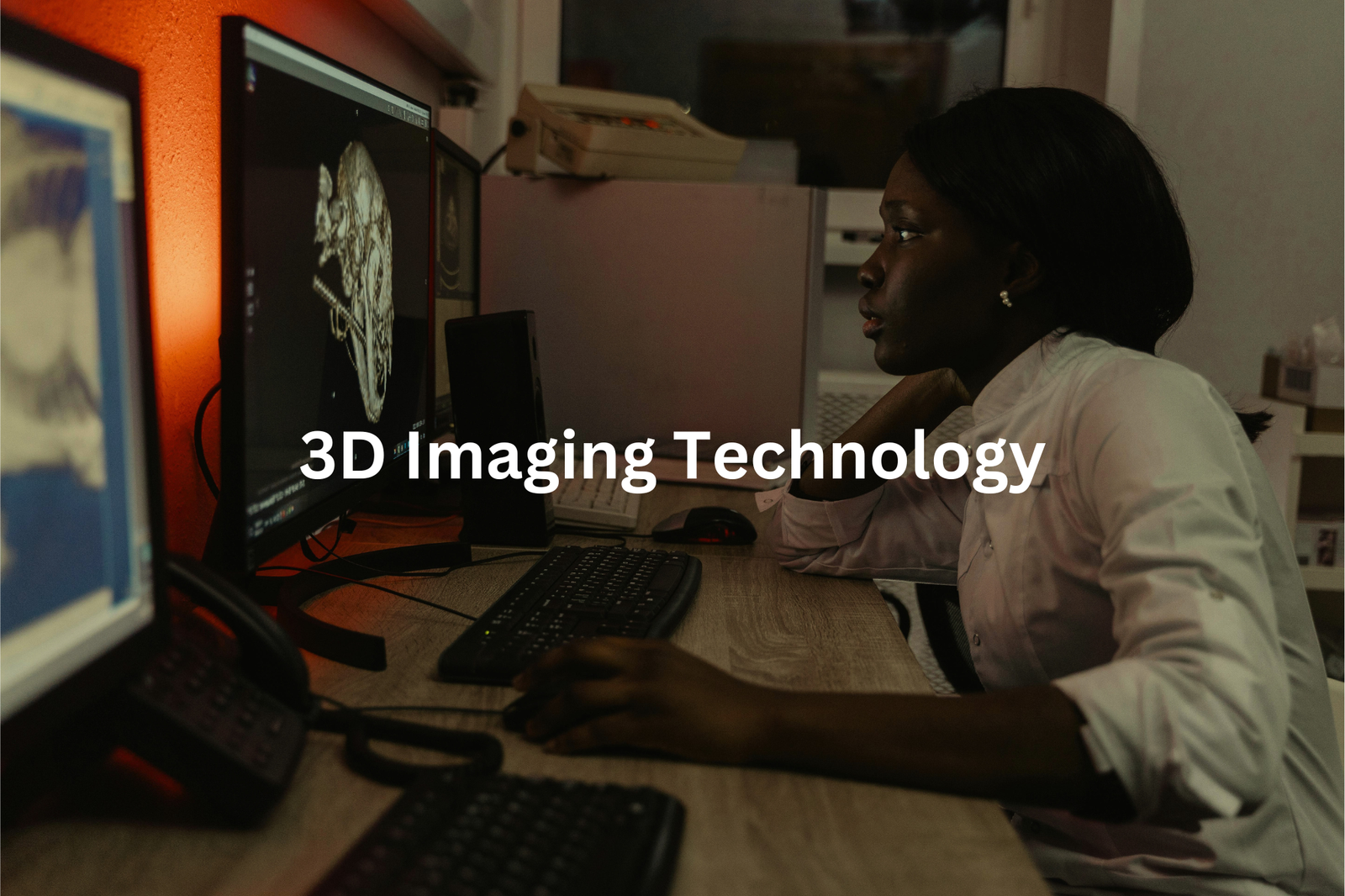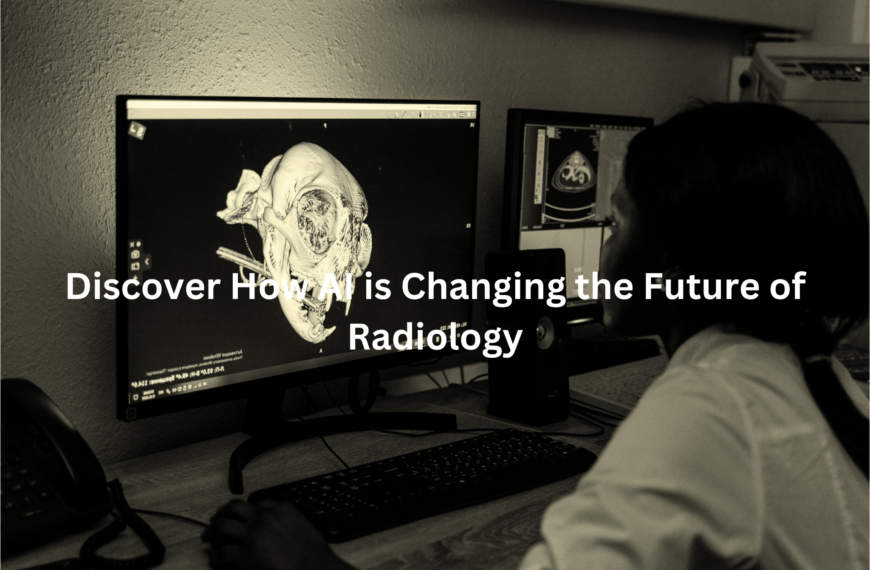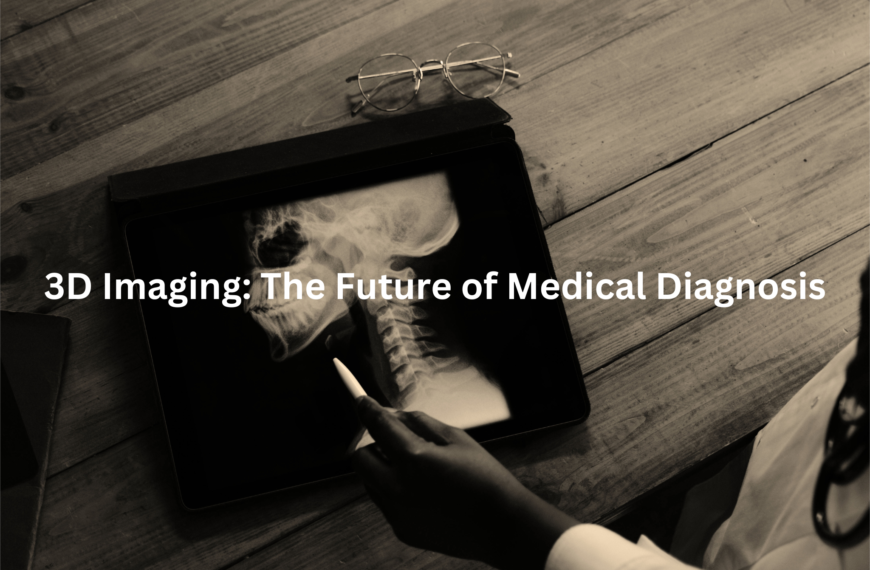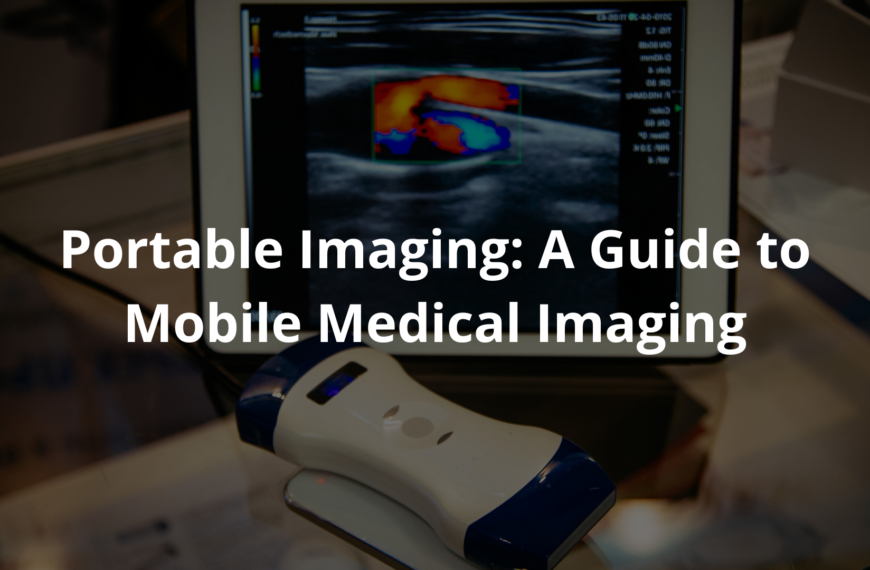Explore the latest radiology trends! AI and 3D imaging are reshaping medical imaging and enhancing patient care. Find out how these trends impact healthcare today.
Radiology trends are changing how we view medical imaging. With cool advancements like AI (artificial intelligence) and 3D imaging, patient care improves every day. These technologies help doctors see problems quicker and clearer, which can save lives. For example, AI can help spot health issues in scans faster than before.
3D images let doctors get a better look at what’s happening inside the body, making it easier to decide on treatment. If you want to learn how these exciting trends improve healthcare and help patients, keep reading! There’s so much more to discover in radiology advancements.
Key Takeaway
- New technology in radiology improves diagnostic accuracy.
- AI and tele-radiology are changing how we interpret medical images.
- Innovations like portable imaging help healthcare providers reach more patients.
Radiology Advancements
Radiology is moving fast. You notice it the moment you walk into a hospital. Machines are quicker, quieter, and give sharper images. It’s not just about taking pictures anymore; it’s about seeing inside the body with amazing detail. MRI (Magnetic Resonance Imaging) is a good example. These machines now produce high-resolution images, helping doctors spot problems like tumours or fractures earlier than before.
I remember a friend who had an MRI years ago for back pain. The machine was slow and loud, and the results weren’t always clear. Today, that same scan would be faster and much more accurate. Doctors could find the issue sooner and plan treatment more effectively.
With more people needing scans, radiology is stepping up. New machines and techniques are being developed all the time(1). If you ever need a scan, you can trust that the technology is working hard to give you the best care.
AI in Radiology
Sources: UQ Engineering and Computing.
AI is changing radiology right now, not in some far-off future. Hospitals, clinics, and labs are already using it to read medical images faster and more accurately. I read about a hospital in Sydney where AI analyses CT scans in seconds, spotting things even skilled radiologists might miss.
Here’s why AI is a game-changer:
- It reviews thousands of images quickly.
- It detects patterns and abnormalities that are hard to see.
- It speeds up results, so doctors can act faster.
- This means better care and more lives saved.
AI uses machine learning, which means it gets smarter the more images it processes. While it’s not replacing radiologists, it’s becoming an essential tool. Think of it as a partner, not a replacement. So, next time you get a scan, remember—AI might be helping your doctor give you the best possible care.
3D Imaging Technology

3D imaging technology is changing how doctors look at the human body. It’s not just flat pictures anymore. Now, they can create 3D models to see organs, tissues, and even tumours from every angle. This makes a huge difference. For example, CT scans can build detailed 3D images, showing the size and shape of a tumour clearly. It’s not just for tumours either—this tech helps with all kinds of conditions.
Here’s why it’s so useful:
- Better accuracy: Doctors can pinpoint exactly where things are.
- Surgery planning: Surgeons can map out every step before operating.
- Patient understanding: 3D models help patients see what’s happening inside their bodies.
I’ve read about surgeons using this to plan complex procedures, making them safer and quicker. It’s amazing how much this helps. I reckon 3D imaging will soon be standard in hospitals everywhere. If you ever need surgery, this tech might just save your life.re’s a good chance this tech will be used to make sure you get the best care possible.
Portable Imaging
Portable imaging is changing healthcare in amazing ways(2). It’s like having a hospital that comes to you. Instead of moving patients to big machines, doctors can now bring smaller imaging devices right to the patient. This is especially helpful for emergencies or people who can’t travel easily. I once read about an elderly woman who couldn’t leave her home due to mobility issues. A portable imaging machine was brought to her house, and it made a huge difference for her care.
Here’s why portable imaging matters:
- It helps patients who are too sick to travel.
- It’s great for emergencies, giving quick results.
- Faster imaging means quicker treatment decisions.
These machines are smaller and lighter than traditional ones, yet they still offer advanced scans like X-rays, CTs, and MRIs. Portable imaging is already improving care in hospitals, clinics, and homes. It’s a growing technology that’s making healthcare more accessible for everyone.
Radiomics Applications
Radiomics is like uncovering secrets hidden in medical images. Instead of just looking at scans, radiomics uses algorithms to find patterns in the data—patterns that might show signs of disease even before symptoms appear. It’s a bit like reading between the lines of a book, spotting things most people would miss.
Here’s how it’s helping:
- Early detection: Catching diseases like cancer earlier.
- Chronic conditions: Finding trends in long-term illnesses.
- Better treatments: Helping doctors personalise care.
Hospitals are starting to use radiomics more often. For example, some algorithms can now detect tiny irregularities in scans, ones that might lead to serious health problems later. It’s exciting because it’s all from the same images we’ve always had—just with smarter tools.
If you’re in healthcare or just curious, radiomics is worth keeping an eye on. It’s changing how we understand and treat diseases.an done, there’s a good chance this technology could help guide the treatment decisions made for you.
Tele-Radiology Trends
Tele-radiology is changing healthcare by making medical imaging more accessible and faster. It allows doctors to share images like CT scans or X-rays instantly, no matter where they are. For example, a doctor in a rural town can send a scan to a specialist in a big city and get a second opinion quickly.
Here’s what it’s doing:
- Accessibility: Rural areas often lack radiologists. Tele-radiology connects them to experts.
- Faster decisions: Doctors can send and review images in real-time, speeding up care.
- Better patient care: Patients don’t need to travel far for specialist opinions.
It’s exciting because it gives patients in remote areas the same chance for a good diagnosis as those in cities. A scan from a small-town hospital can get expert review from anywhere in the world.
For healthcare workers, this means better tools to help patients—no matter where they live.re than just a trend. It’s the future of healthcare, making it more connected and efficient. If you’re a healthcare provider, using tele-radiology might just be one of the easiest ways to improve care.
Virtual Radiology Tours
Virtual radiology tours are quietly changing how patients experience healthcare. When you walk into a hospital, the big machines like CT scanners or MRIs can seem scary, especially if you’ve never seen one before. Virtual tours let patients explore these machines beforehand, easing some of that fear.
These tours are helpful for a few reasons:
- Familiarity: Patients can see how the machines work and what they look like.
- Education: They answer common questions, like what happens during a scan.
- Comfort: Knowing what to expect can make the experience less stressful.
This is especially useful for kids or first-time patients. For example, a child could watch a virtual tour of an MRI machine at home, hear the sounds it makes, and understand why it’s needed. For clinics and hospitals, offering these tours could improve patient care. It’s a simple way to make procedures feel less overwhelming.
Image-Guided Surgeries

Image-guided surgery might be one of the most fascinating advancements in radiology today. It’s like giving doctors a live map of the body during surgery. They can see exactly where to work, avoiding areas they shouldn’t touch. It’s all done using real-time images from tools like CT scans, MRIs, or X-rays.
Why does this matter?
- More Accuracy: Doctors can target the problem area precisely.
- Less Risk: Smaller chance of mistakes or complications.
- Faster Recovery: Tiny incisions mean patients heal quicker.
- Better Outcomes: Less pain, fewer scars, and shorter hospital stays.
A mate of mine had a clot removed through interventional radiology. They used a tiny catheter, guided by imaging, to fix the issue. No big cuts, just a small puncture. She was home the next day!
If you ever need surgery, ask about image-guided options. It’s a game-changer for modern medicine.it might be worth asking if image-guided surgery is an option. It could make all the difference.
Future of Radiology
The future of radiology is looking pretty fascinating, if you ask me. Every day, new advancements seem to pop up. AI (artificial intelligence) is already helping doctors read scans faster and more accurately, which could mean earlier disease detection(3). It’s not just a dream—it’s happening.
Here’s what could be next:
- AI & Machine Learning: Smarter algorithms might reduce errors in scan analysis.
- 3D Imaging: Doctors could view organs or bones in 3D, making surgeries less invasive.
- Tele-radiology: Specialists could examine scans remotely, helping patients in rural areas.
- Lower Radiation: New tech might mean clearer images with less exposure.
I remember when X-rays and CT scans were the main tools—useful, but limited. Now, with VR and other tech, things are evolving so quickly. For patients, this means faster, more precise diagnoses. Next time you’re in for a scan, you might just see the future in action.
Radiology Innovations
Radiology’s future feels like it’s always expanding, with new tools and technologies showing up all the time. It’s not just about fancy machines anymore; it’s about making things faster, smarter, and easier for both doctors and patients.
Take cloud technology. It’s changed how radiologists work. Instead of being stuck at the hospital to view scans, they can now access X-rays, MRIs, or CT scans from anywhere. This is especially helpful for patients in remote areas who might’ve waited longer for care before.
Communication’s better too. Radiologists can quickly share images and results with other doctors. Sometimes, what used to take days now takes just hours. That’s a big deal. These changes don’t just help doctors; they help save lives. Faster results mean quicker treatments. What’s next? Hard to say, but with all this progress, the future of radiology looks pretty exciting—and hopeful—for everyone.
FAQ
What are the latest trends in radiology departments?
Radiology departments are embracing new medical imaging technologies to improve patient outcomes. Advances in diagnostic imaging services, like higher-resolution images and faster scan times, help healthcare organisations provide better quality of care. However, radiologist shortages and the growing demand for imaging procedures remain challenges for the radiology industry.
How are healthcare professionals using medical imaging technologies?
Healthcare professionals are leveraging a wide range of medical imaging technologies, from CT imaging to breast tomosynthesis, to enhance diagnostic accuracy and workflow efficiency. Deep learning algorithms are being integrated into clinical systems to assist with image interpretation and improve the effectiveness of radiology as a diagnostic tool. This advanced technology helps reduce radiation exposure for patients.
What are the benefits of improved image quality in radiology?
Improved image quality from medical imaging technologies enables earlier detection of diseases and better monitoring of chronic conditions. Higher-resolution images and more efficient workflow help healthcare professionals make more accurate diagnoses, leading to improved patient outcomes and reduced radiation doses. Experienced technologists play a crucial role in capturing high-quality scans to support patient-centred care.
How is the radiology industry addressing the shortage of radiologists?
The shortage of radiologists is a major challenge for the healthcare industry. Radiology departments are exploring ways to improve workflow efficiency and access to radiology services, such as leveraging communication systems and clinical algorithms. Healthcare organisations are also investing in training programmes to address the insufficient number of medical students pursuing careers in diagnostic radiology.
What are the sustainability initiatives in the radiology field?
The radiology industry is exploring “green radiology” approaches to reduce the carbon footprint of healthcare facilities. Initiatives include optimising radiation doses, implementing direct cost savings strategies, and exploring competitive compensation packages to attract and retain experienced medical professionals. These efforts aim to support more sustainable practices in the broader healthcare ecosystem.
Conclusion
Radiology is changing a lot, and that’s making healthcare better for patients. New tools like AI, 3D imaging, and portable machines help doctors see pictures of what’s happening inside our bodies more clearly. This means quicker, more accurate diagnoses and better care overall. Looking ahead, we can expect even more exciting changes in radiology. Staying up-to-date with these trends is key to making sure all patients get the best help possible.
References
- https://www.ranzcr.com/our-work/quality-standards
- https://www.lsrhealthcare.com.au/products/acteon-pspix-cordless-imaging-plate-scanner?srsltid=AfmBOooT-QixXfR0vE824-zAeJIRoAAOQZHM9-kwUpQnSQzDoJ-XVaUW
- https://www.ranzcr.com/whats-on/news-media/blog-series-a-vision-for-cr-in-the-world-of-digital-health-part-3-the-future-of-digital-health-in-radiology




